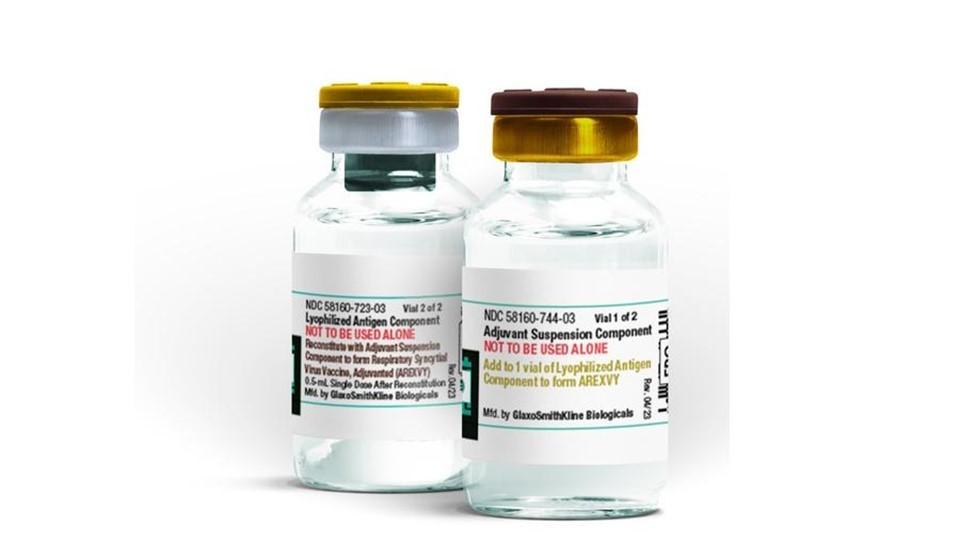5 ways to address pricing and access challenges across the European landscape

In the feature ‘Successfully navigating the complexity of market access across Europe to improve health equity’, originally published in the European Biopharmaceutical Review, EVERSANA General Manager for the European Region, Mike Ryan, and EVERSANA SVP Global Access & Pricing, Paolo Correale, discussed the challenges faced when it comes to launch success in Europe, in terms of its size and considerable diversity.
From prolonged timelines for Health Technology Assessments (HTAs) to disparities in access between wealthier and less affluent nations in Europe, Ryan and Correale provide a comprehensive overview of the current landscape and its impact on patient access to innovative treatments.
While attending BIO Europe Spring in Milan, pharmaphorum spoke with Correale, who provided further insights on the complexities of European launch – and five new methods for addressing these.
Reimbursement and Early Access Programs
With 27 member states and some 450 million residents, alongside these European markets are the UK and Switzerland, also. And pricing and reimbursement processes here are far more complicated, certainly in terms of variability, than the US. Indeed, the first challenge mentioned in the article is developing an understanding of that European reimbursement landscape.
“Differently from the US, in Europe most of the reimbursement is managed at the national level, so not at the European Union level,” Correale explained to pharmaphorum. “Each country really has their own system; no two of them is equal.”
By way of example, Correale highlighted Germany as a case in point, a country where reimbursement is provided up front and negotiations happen later in time.
“This allows companies to immediately start generating revenues, even though there are callbacks in terms of that,” he said. “Most of the other national governments in Europe, they first have a negotiation, and then at the end of the negotiation they grant reimbursement for the drug.”
Early Access Programs, as exist in France and Italy for instance, offer another avenue, providing reimbursement in some cases even before EMA authorisation.
“For generics and biosimilars, there is a relatively expedited pathway,” added Correale. “It's still about getting reimbursement, negotiating with the national payer, but it's typically faster. [New] innovative treatments are also the ones that are typically suitable for Early Access Programs.”
A heterogeneous versus a single market
Disparities across borders, of course, are a key challenge in terms of health inequities across Europe, and differ from the US’ homogeneous reimbursement landscape.
“The reality is that a heterogeneous reimbursement also means that there are countries where reimbursement is not granted, or is granted later down the line,” noted Correale. “[The] European Union is a setting where reimbursement to the patient is provided by the government. If that reimbursement is not provided, there is a very limited share of the population that will be able to access treatment […] There are plans where manufacturers can decide to provide a drug for free, for example, through compassionate use programmes, but, then again, there are restrictions to that and, understandably, that's not sustainable in the long term.”
Similarly, orphan drugs for rare disease launch more often and more quickly in the US because there is no negotiation with the initial payer entailed.
“Therefore, typically – or at least on average – the prices are higher,” said Correale. “They are not necessarily higher across all of the products, but generally they are higher and they can be increased over time. Since orphan drugs have smaller populations, typically, manufacturers need to fetch high prices in order for them to be economically sustainable.”
The US is also a case of “one market, one language,” in terms of Europe being a tougher market to operate in.
5 new options for European launch
Importantly, the European Biopharmaceutical Review article noted “five newer concepts or programmes” emerging, offering new options for brands to address pricing and access challenges across the European landscape. These are: harmonisation of the HTA process across borders; new risk-taking agreements; focusing on data integration; incentivisation for orphan drug providers; and a move for price consistency and addressing international reference pricing challenges.
1. Harmonising of the HTA process across borders
Notably, the new HTA framework that went live in Europe in January this year, with Joint Clinical Assessments (JCAs) for oncology and ATMPs, permits a reduction in duplication efforts within the evaluation process.
“This new framework is good for simplification of the initial part of the conversation with the National Ministries of Health because it summarises, in a sense, and provides consistency to the clinical evaluation that is performed on the drug – so, how the Ministry of Health would actually assess from a clinical perspective a given drug” stated Correale.
“It’s a process that's running in parallel with the regulatory one,” he continued. “Instead of being a sequential one […] you do the first and the second step in parallel. I must stress, however, that the pricing negotiation will still go on. It's not going to be centralised. Reimbursement will still need to be discussed at the national level […] In any case, the objective here is also to simplify, by encompassing the clinical perspective in a European dossier, to simplify the national dossiers that need to be presented.”
2. New risk-sharing agreements
With new risk-sharing agreements (RSAs), there is potential not just for the healthcare ecosystem, but for cell and gene therapies also. RSAs are arrangements between pharma companies and healthcare payers that are designed to manage both financial and clinical uncertainties associated with new drugs.
“A risk-sharing agreement incurs in complexity and costs for the Ministry of Health, so, for the healthcare system, as well as for the company in order to design these agreements, and then execute them all over the board,” explained Correale. “The point is that cell and gene therapies are the most suitable because [they are] very high-cost drugs that are usually one-time treatments, and therefore the risk is typically associated with how long the efficacy is going to [last].”
“What we will need to observe attentively over the next years is whether [such] partnerships between payers and companies are actually able to deliver on risk-sharing agreements that are then easily executable in practice,” he continued, “and [whether] this will lead to them augmenting in number, or whether the implementation complexity will actually constrain them and lead to just simple discounts.”
3. Making data integration a focus
Collecting real-world evidence and harmonising data across EU nations is another way being explored to overcome the heterogenous regulatory environment of Europe. To which end, the European Health Data Space (EHDS) has been designed to “facilitate the exchange and access of health data across member states.” Certainly, standardisation of data formats and protocols across borders – including EHRs, medical devices, and other such health IT systems – would align and expedite processes.
4. Growing incentives for orphan drug providers
There has also been movement to follow the US in terms of incentivisation of orphan drug development, where a drug tax credit exists to promote new therapeutic development for rare diseases.
“All in all, the incentivisation at European level of orphan drugs is pretty good from a regulatory perspective, providing better benefits than usual,” said Correale. “Typically, it's [providing] more incentive [even] than the US orphan drug designation. Also, some payers, like Germany, provide very meaningful benefits to orphan drugs [and] in Italy the Early Access Programs are mostly for orphan drugs. The reality is that there are benefits already in Europe.”
“Regardless, the system in the US typically allows you to get a higher price,” he added.
5. Fighting for price consistency and addressing international reference pricing challenges
The last new option is to modify current international reference pricing (IRP) rules and remove price comparison methods between countries to prevent inequalities across Europe.
“In principle, the international reference pricing system is about national payers taking a look at the price that was negotiated with other payers, and factoring that in their negotiations,” Correale said. “The complexity is that each country has their own rules, and [those] rules can create inequalities in certain countries, which is connected to the confidential discount agreements.”
With confidential discount agreements, the intention is that negotiation of a price in one country does not spill over into other countries. Although, questions around transparent pricing remain.
“In a sense, you could even venture delivering a higher discount at the national level because then you know that you will have less of an impact on the other countries,” continued Correale. “At the same time, if every given government commercialises entirely on the basis of confidential agreements, the IRP system will become useless.”
“It's important that there are some, let's say, lighthouse countries like Germany that are still moving forward with non-confidential agreements, even though we must acknowledge that, recently, Germany has introduced an option for companies to provide a higher rebate at the national level in order to have a confidential pricing agreement.”
US tariffs and manufacturing
Much has happened under the new administration in the US since the article was published. It can, indeed, be said that now is an important moment to improve market access across Europe.
“In some ways, the current US administration is following on, for example, in supporting the Inflation Reduction Act, which was an important measure for the previous administration,” noted Correale. “I think US tariffs do have a connection with the reimbursement system, meaning that, first off, this is going to affect more the generic and biosimilar companies, than evidently the innovative companies or the orphan companies, because in the overall P&L, tariffs are about manufacturing, and manufacturing costs are relatively more relevant in a generic or biosimilar product P&L.”
“[But] the reimbursement system in the US allows you to keep on increasing prices,” he added. “In a sense, manufacturers can still enter the US and just increase prices according to the tariff impact on their manufacturing. This would, unfortunately, then potentially result in a problem for the patients, for the consumer premium and for the insurance premium.”
“In Europe, the system is more rigid, because it's very rare for payers to allow price increases,” Correale explained. “Therefore, this would be mostly a liability on the manufacturer's side, where the manufacturers can actually see their margins eroded in a [European] setting, where prices are already lower than the US.”
“The European system entails complexities in health equity, but can still be successfully solved with the right capabilities, with the right strategy in place. The European healthcare system is still a solid one,” concluded Correale.
Read the full article here to gain deeper insights into these critical issues and discover how EVERSANA is leading the charge in transforming market access in Europe.












